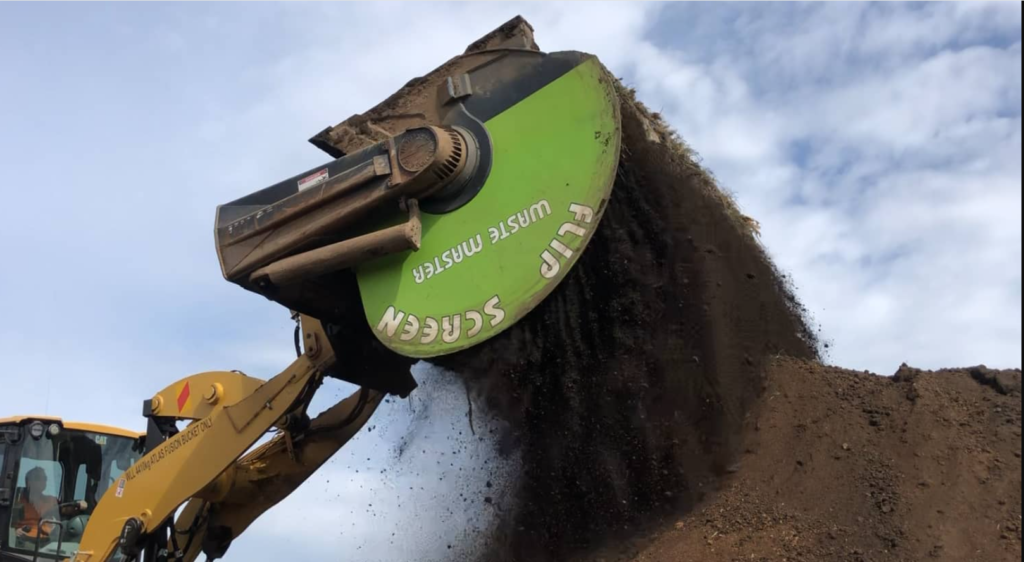Whether you’re working on a home garden, a landscaping project, or a large construction site, soil quality plays a critical role in the success of your project. Poor soil filled with debris, rocks, and other unwanted materials can slow things down, leading to delays, increased costs, and potentially poor results. That’s where soil screening comes in. By filtering and improving the soil before starting your project, you can save both time and money, ensuring smoother progress and better outcomes.
In this post, we’ll explore how soil screening works, why it’s essential for many projects, and how it can lead to significant savings in the long run.
What is Soil Screening?
Soil screening is the process of sifting soil through a mesh or sieve to remove large debris, rocks, roots, and other materials that can impede soil quality. It creates a cleaner, finer soil that’s easier to work with and better suited for planting, landscaping, and construction. By ensuring the soil is free from obstructions, you’re setting the foundation for a smoother, more efficient project.
How Soil Screening Saves You Time
Easier Soil Preparation
Working with unfiltered soil can be a headache. You might constantly hit rocks or chunks of debris while trying to plant or level the ground, forcing you to stop and remove them. This interrupts your work flow and adds unnecessary time to the project. Screened soil, however, is much easier to work with, allowing you to dig, plant, or lay materials without interruptions.
Fewer Project Delays
When using unscreened soil, you may encounter unexpected issues such as poor drainage or uneven surfaces caused by large chunks of material hidden beneath the soil. These problems often require additional work to correct, delaying your project. Soil screening ensures that the soil is uniform and free of obstacles, helping to avoid these last-minute surprises and keeping your project on track.
Faster Plant Establishment
In gardening and landscaping, plants establish more quickly in screened soil because their roots can grow freely without being obstructed by rocks or compacted clumps of dirt. This means less time waiting for your plants to take hold and flourish, allowing you to see results sooner.
Improved Drainage and Irrigation
Screened soil has a more consistent texture, which leads to better water drainage. Poor drainage can lead to waterlogged areas or puddles that slow down plant growth or damage landscaping features. With screened soil, water flows more evenly, preventing these issues and allowing you to move forward with confidence.
How Soil Screening Saves You Money
Reduces the Need for Additional Soil Purchases
When working with unscreened soil, you might be tempted to purchase expensive topsoil or amendments to compensate for poor soil quality. However, screening your existing soil can often improve its structure and nutrient content, reducing the need to buy new materials. This can lead to significant savings, especially for large projects where soil costs can quickly increase.
Minimizes Equipment Wear and Tear
Rocks and debris in unscreened soil can cause damage to tools and equipment. For example, hitting a large rock with a tiller or a shovel can bend or break equipment, leading to costly repairs or replacements. By screening your soil beforehand, you reduce the risk of equipment damage, saving money on repairs and avoiding unnecessary downtime.
Improves Plant Health, Reducing Replacement Costs
Poor soil conditions can lead to weak, unhealthy plants that are more susceptible to diseases and pests. This can result in the need to replace plants or redo parts of your landscaping, which costs both time and money. With screened soil, you’re giving your plants the best possible environment to thrive, reducing the likelihood of needing costly replacements and soil amendment down the line.
Eliminates the Need for Excess Labor
Working with unfiltered soil often means spending extra time removing rocks, clumps, and debris by hand. This can lead to higher labor costs if you’re hiring help or more hours spent if you’re doing the project yourself. Screened soil is ready to go from the start, reducing the amount of manual labor needed to prepare the soil and speeding up the entire project.
Prevents Costly Drainage and Erosion Issues
Inconsistent or poorly draining soil can cause significant problems over time, such as erosion or water damage to landscaping and hardscaping features. These issues often require expensive fixes to restore. Screened soil, with its improved drainage and uniform texture, helps prevent these problems from occurring in the first place, saving you money on repairs and maintenance.
Ideal Projects for Soil Screening
Soil screening isn’t just for large-scale construction projects. It can benefit a variety of applications, including:
- Home gardens: Ensuring that your garden soil is free of rocks and debris can make planting easier and improve plant growth.
- Landscaping: Screened soil creates a smoother, more level surface for laying sod, planting flowers, or installing hardscaping features like patios and walkways.
- Construction sites: Screened soil provides a stable foundation for building, reducing the risk of future settling or drainage issues.
- Agriculture: Farmers often screen soil to ensure even crop growth and prevent obstructions that can interfere with plowing and planting.
Conclusion
Soil screening is a simple but highly effective way to save time and money on your next project, whether it’s a small backyard garden or a large construction site. By filtering out unwanted materials, you improve soil quality, reduce labor and equipment costs, and set the stage for better results. In the long run, screening your soil before starting a project can prevent delays, costly fixes, and the need for additional materials, making it a smart investment for any project that relies on healthy, well-prepared soil.

